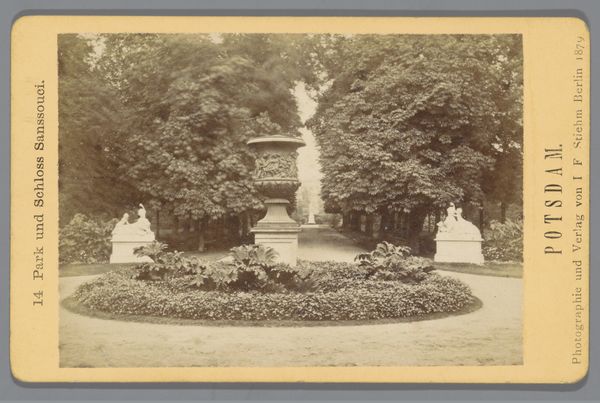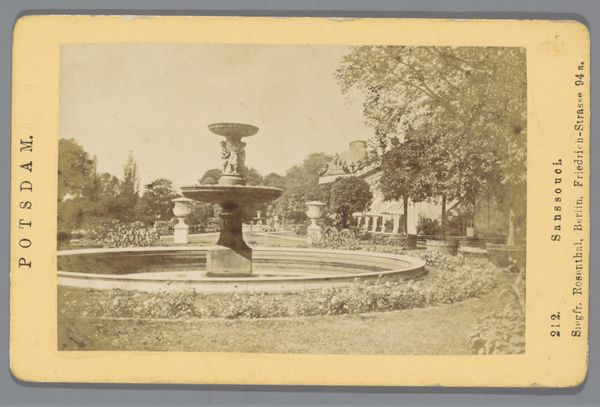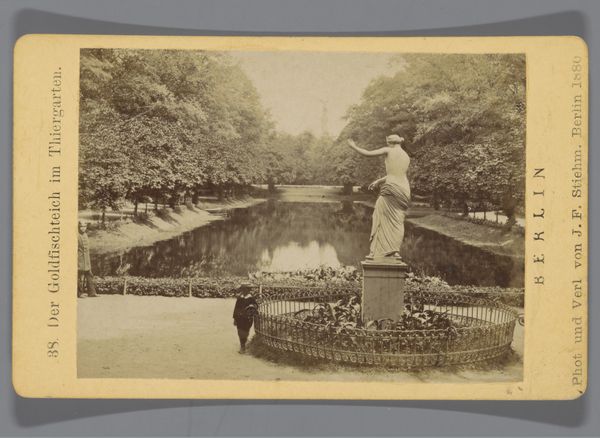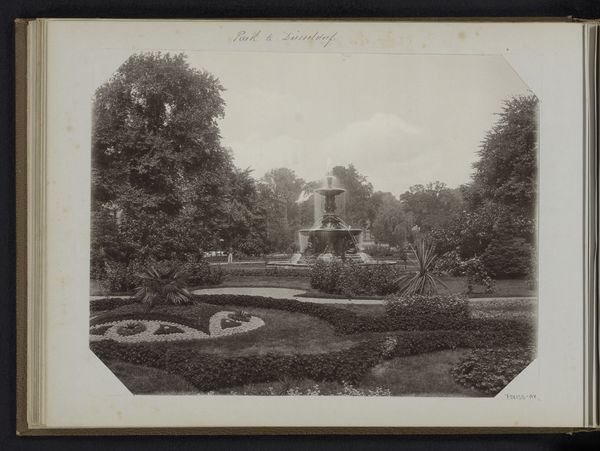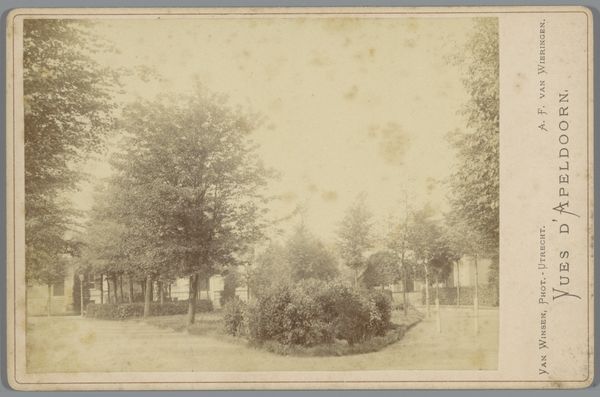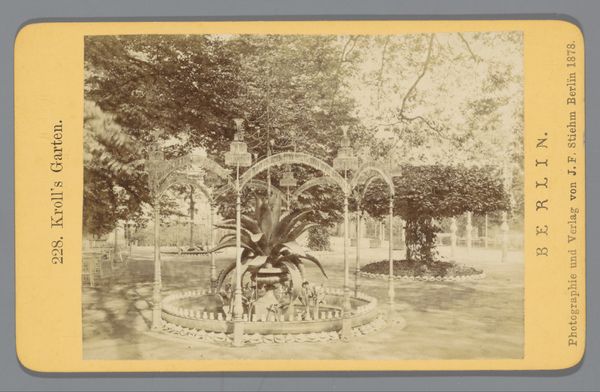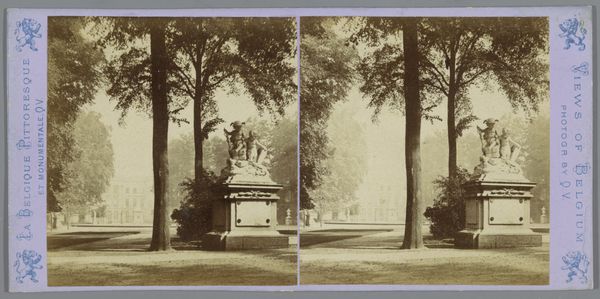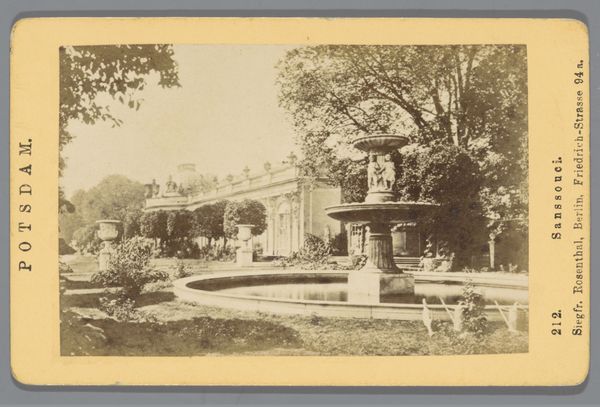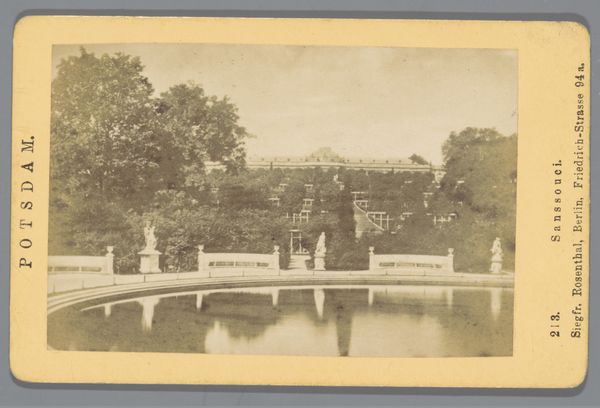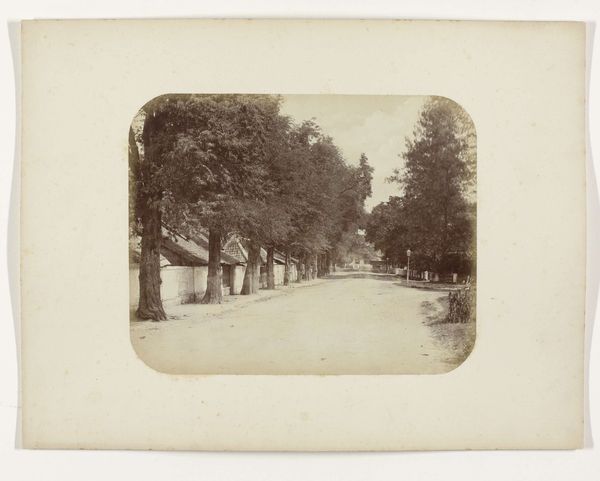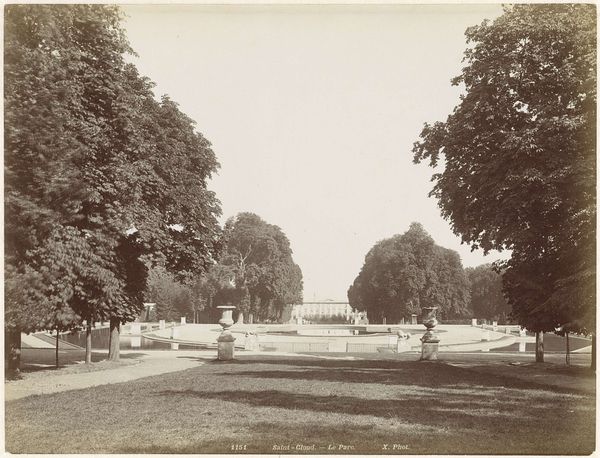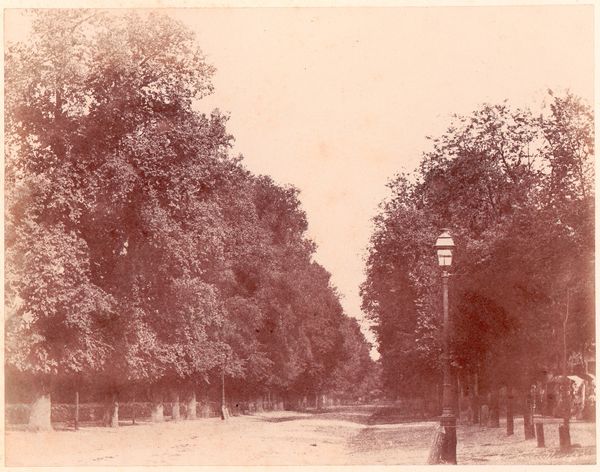
Dimensions: height 109 mm, width 168 mm
Copyright: Rijks Museum: Open Domain
Editor: So, here we have "Gezicht op de Janssingel in Arnhem," a photograph, specifically an albumen print, potentially created between 1850 and 1886 by Brainich & Leusink. The sepia tones give it a real sense of age. I’m struck by how the receding lines of trees create depth. How do you approach a piece like this from a formal perspective? Curator: I’m immediately drawn to the photographer's mastery of composition. Notice how the lines of the trees aren’t just receding; they frame the space. The albumen print provides us with gradations of light and shadow, particularly on the surface textures. Ask yourself, does the light highlight something specific? Editor: Yes, the brightest area is right in the center, around the building at the end of the path. It feels almost staged, with the building as a sort of focal point. It contrasts with the darker foliage framing either side. Curator: Precisely. That play of light and shadow creates a balanced asymmetrical design. One must consider also the geometric organization of the space and the building versus the organic quality of the plants and trees, how those are put in relation, not for any particular external value, but to see what effect that opposition provides to the observer. What does that contrast do for you? Editor: It’s dynamic. It’s not just a flat documentation; it is like the architecture imposes structure over nature itself, the pictorialist manipulation softens it again though. I wonder, am I imposing meaning that isn't actually there? Curator: Meaning arises from observation and interrogation of those pictorial elements. Does the structure invite meaning for you, or impose meaning? The visual properties predate you, or I, the viewer and critic comes second. What strikes me most is the use of form to lead the eye. Editor: This has shown me that analysing the formal relationships within the artwork provides such a clear path into interpreting its complexities. Curator: Indeed, by attending to the visual cues within the composition, we gain a language for dissecting this constructed reality, a grammar through which the past is made present again.
Comments
No comments
Be the first to comment and join the conversation on the ultimate creative platform.
